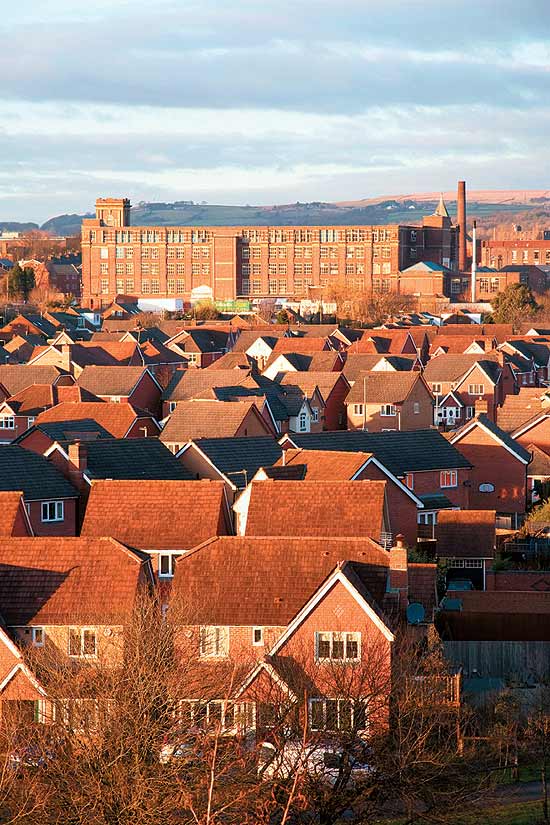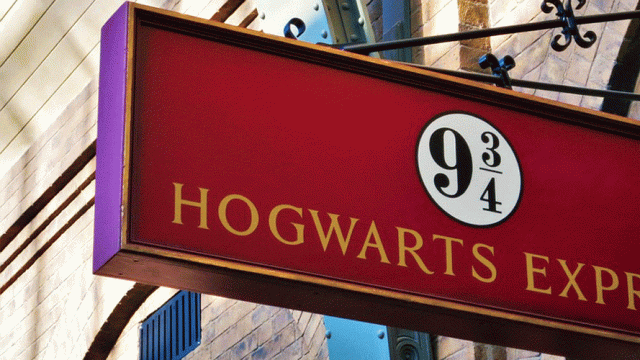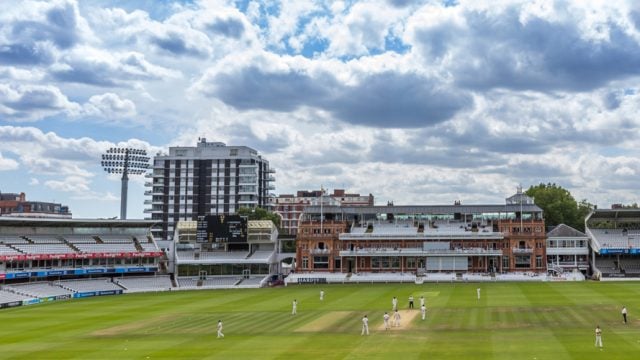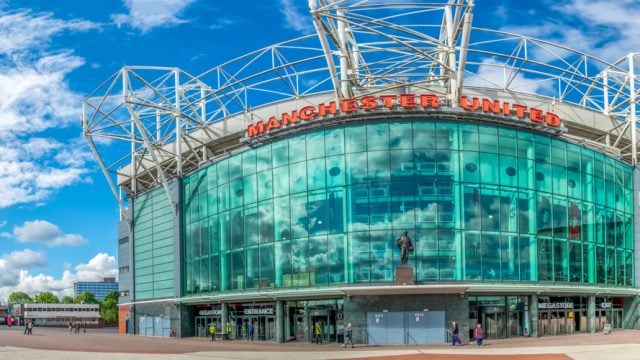My first trip to England, I always imagined, would take me on winding country roads past sunny
Lovely surprises unravelled from the moment I landed, and I have wondered if I shouldn’t give too much away, for they were such fun. John Consterdine, our cheerful and marvellously well-informed hackney cabbie, met us at the airport and drove us to town with a brief sampling of what was to come in his award-winning taxi tour later in the day. We rolled past the scenic neighbourhood of Northenden, where ‘many footballers’ live, and the stately Victorian houses of Withington, historic suburbs where the affluent avoided pollution by living upstream from the south-westerly wind. Autumn was still clinging to rapidly denuding trees, the streets thick with falling leaves in rich shades of russet, even though the immaculately kept lawns remained green. The warm and spacious hackney not only enabled us to cover a lot of ground in a little time, with John’s enthusiastic rendering of facts and frequent photo stops, it added immeasurably to the experience of learning Manchester—the hive of Asian enterprise which goes by the name of Curry Mile; the century that separates Victorian architecture from the older Georgian era; the Gothic cluster of buildings that marks the entrance to the Manchester University, one of the largest in the UK; the opulent Town Hall designed by Alfred Waterhouse (their popular Sculpture Hall Café gets its name from its extravagant location); the tranquil 15th-century cathedral, venue of the first mass meeting to abolish slave trade in 1787; the grand Central Library on St Peter’s Square, which recently opened after four years of renovation at a cost of £48 million to become the ‘living room of the city’; the cartouche at the magnificent Midland Hotel illustrating where Rolls and Royce first met; the plaque recalling the oldest passenger railway station in the world, the Liverpool Road Station, which commenced operations on 15 September 1830 and is now assimilated into the must-see Museum of Science and Industry, especially with kids; and the set where the world’s longest running soap opera, Coronation St, was filmed, opposite which is the Great John Street Hotel, a gem that has turned the old Atherton school house into a fansquirky boutique hotel (there are signs showing the boys’ and girls’ staircases, the headmaster’s office is a meeting venue, and the rooftop playground is an atmospheric lounge).

Manchester is a city of galleries, theatres and restaurants that respect its built legacy by adapting and reinventing it at every turn. We see it in the glowing windows of red brick apartments; in Jamie Oliver’s Michelin-starred restaurant on King St that was once the renowned Midland Bank; in the defunct Central Station ingenuously turned into a happening convention centre; in six-hour pleasure cruises to Liverpool down the erstwhile Manchester Ship Canal, built in 1894 by 17,000 men; in the godowns of the old ‘Cottonopolis’ that have been converted into classy offices; in the Haçienda club of the Madchester years, which is now a residential block (the Warehouse Project tries to bring back that extraordinary era of new music). John encourages requests for personal favourites, and my companion had us taking pictures at the soulful Salford Lads Club, famously on the sleeve of the album God Save The Queen by The Smiths, and the goosebumpily empty stands of the Old Trafford Cricket Stadium, where we arrived after dark. The Castlefield conservation area turned ‘urban park’ became another favourite I won’t forget—it’s where the Romans first arrived in 79CE, drawn to the water provided by the Irk, Metlock and Irwell rivers (the ruins of their fort and granary are kept so well here), and here too is the famous Bridgewater Canal, which ended Britain’s fuel crisis of the 1760s by transporting coal at half price and kicked off the Industrial Revolution with dramatic consequences for Manchester and, eventually, the world (eastern trade opened up with the nearby Rochdale Canal, beside which Mancunians now enjoy salubrious walkways).
I discovered some of this and more on another guided experience, this one a walk the following morning, which ended at the recently opened Elizabeth Gaskell’s House, where a terribly shy Charlotte Bronte once hid behind a curtain to avoid another guest. Tea, cake and Elizabeth’s novels can be found in the basement of this modest and welcoming restoration managed by volunteers. On the other hand, the Victoria Baths is a cavernous and disused “water palace of which every citizen of Manchester can be proud”. It’s also an inspiring work-in-progress by a dedicated band of conservationists who labour to restore the patterned mosaic, thematic stained glass, Terrazzo flooring, wrought iron turnstiles and baywood and pitch pine balustrades that surround three huge swimming pools, 64 Turkish and Russian baths, and the upstairs flat of the Superintendent of Baths and Wash Houses (Manchester once had 26 of them, although this is the grandest).

You can imagine the fantastic diversity of Manchester’s attractions because I was signed up right after this for a tryst with the other Old Trafford: the Manchester United Museum and Stadium Tour. Do arrive at least half hour ahead to get a sense of the enormous dimensions of this legendary red-themed arena, and spend time at its multi-level museum, which ends where the tour begins. It was the sharp odour of garlic (sprayed to keep the grass free of bugs; the jolly tour guide said it also keeps vampires away) that preceded our first view of the ground and its tiered stands, designed to seat 76,000. Football fans will love the behind-the-scenes access the tour gives this ‘theatre of dreams’, and the little run into the stadium with a simulation of match-day music and roars is super fun. That very night, Manchester wowed me yet again with a perfectly danced Edward Scissorhands, the Tim Burton classic in its first major revival by Matthew Bourne, at The Lowry, one of the waterfront highlights of the magnificently redeveloped Salford Quays.
Have you ever felt that you absolutely have to return to a city when you are leaving it? That was me at the John Rylands Library, one of the world’s finest collections of books and manuscripts set within a gorgeous architectural achievement (the original Victorian toilets are unchanged since 1900 and still in use). I will say no more than that the entrance hall, main staircase and historic reading room will completely sweep you away, as will the seamless manner in which this little-known landmark juxtaposes its modern wing with its old buildings. This is a cathedral of knowledge. Visitors with cameras tread softly as scholars read in silent alcoves (I could hear myself breathing).

Thus did I arrive in Liverpool the next day, on a high with the wonders of Manchester, till Liverpool, gently and rightaway, levelled the playing field with its compact spaces, Unesco sites and thriving musical traditions. Hope Street, where I went for my first walk in the city, couldn’t have been named more aptly. It is part of the historic Georgian quarter, with elegant townhouses originally built by wealthy shipping merchants arrayed in cobbled bylanes. Hope Street is also about quirky art installations, and a delectable line-up of hotels and restaurants that transform into pavement cafés in the summer.

The Everyman Theatre is on this road, its façade made up of photographs of ordinary Liverpudlians, and it won the prestigious Sterling Prize for architecture from the Royal Institute of British Architecture (the Riba, affectionately) after competing against the likes of the Shard in London. At the other end of it is the unmissable Anglican Cathedral, the largest in UK (its 31-ton bell, the Great George, is the biggest in the world). Lifts are available for most of the way up to its tower, which enables wind-whipped views of the coastal city, and on Level 3 is the Elizabeth Hoare Embroidery Gallery, which throws beautiful light on the frequently overlooked ecclesiastical art.
I spent another day discovering two dramatically opposite sides to Liverpool. The historic centre of the city feels like something out of Rome, so impressive is its congregation of stunning architecture, key among them the sprawling St George’s Hall, the bustling Central Library, and the tranquil Walker Art Gallery (entry free to wonders such as Rubens’ The Virgin and Child with Sts Elizabeth and John the Baptist, Rembrandt’s Self Portrait as a Young Man, and Rodin’s The Death of Athens and Danaid). Yet that very evening, I was tromping through the fashionable Liverpool One, a modern shopping district full of great deals and energetic crowds, excellent for people watching. The people of northwest England are a friendly folk, given to kindness and courtesy, and more than once, when I asked for directions, I found myself being led by a complete stranger for a good hundred paces just so he or she could show me where I needed to go.

It was American sailors on transatlantic routes who brought revolutionary new sounds like the blues to the port of Liverpool, and young music lovers of the city would buy, copy, assimilate and create original music out of these influences. The Beatles, of course, were one of them, as were Gerry and the Pacemakers.
I heard the latter’s ‘Ferry Across the Mersey’ played on the Mersey ferry guided tour, a charming hour-long discovery of the both sides of the historic waterfront with stops at Seacombe and Woodside (more attractions are handy at both), evoking the stories behind the old gunpowder and dry docks, a lighthouse that could be seen 25 kilometres away, a tobacco warehouse that’s the largest brick structure in the world, the wind turbines that power the new port, and the iconic Three Graces that dominate the Unesco-notified Albert Dock. You would never guess that Albert Dock, an immaculate stretch of imposing buildings, modern museums, squawking seagulls and cheery buskers, was a notoriously sleazy eyesore in living memory.

Here too is The Beatles Story, a captivating exposition of the band’s phenomenal journey. I felt very fortunate to have experienced it before taking the spiral steps down and then further down to The Cavern Club, which has a whole quarter, throbbing with nightlife, named after it, and where the Fab Four performed no less than 262 times. They still have live music every single day. The brick ceiling is low and vaulted, the beer flowed freely, and revellers pressed forward to get a closer look at local boy Richard Batty performing on the modest platform that went for a stage. The throaty audience didn’t need much encouragement to sing along with great covers in an extempore tribute to a phenomenal city and its cherished traditions. Oh, it’s impossible to describe the uplifting energy of this experience. You must go and see (or sing) for yourself.
The information
Getting there: Manchester is the second busiest airport in the UK, but there are no direct flights from India currently (that’s set to change in 2015). So fly to London (roundtrip from major Indian metros for about Rs 45,000) and thence to Manchester (from £100). Or take a train to the Manchester Piccadilly Station from London’s Euston (from £20; www.thetrainline.com). Liverpool is less than an hour’s drive from Manchester and also well-connected by frequent trains.
Visa: Apply for a UK visa here: www.visa4uk.fco.gov.uk/home/index. Pay the fee (Rs 8,715) and take an appointment online. Go over in person with the supporting documents. The passport is returned within 15 working days.
Currency: £1=Rs 95 (approx)
Where to stay:
MANCHESTER
The luxurious Great John Street Hotel (from £200 for doubles without taxes; www.eclectichotels.co.uk) offers warm service, great food and chic rooms. Be sure to book ahead. The lovely mid-range The Midland Hotel (from £85; www.qhotels.co.uk) once turned away The Beatles for being inappropriately dressed. The Macdonald Hotel (from £74; www.macdonaldhotels.co.uk) is another mid-range option with a fantastic location and the biggest rooms in the city. The stylish Inn Express Oxford Road (from £49; www.hiemanchester.co.uk) makes for a good budget option.
LIVERPOOL
We enjoyed a pleasant stay at 2, Blackburne Terrace (from £180; www.2blackburneterrace.com), a luxury B&B in a restored Georgian townhouse off Hope St, with just four rooms done up idiosyncratically. Holiday Inn Express (from £63; www.ihg.com) is a standard hotel right on the Albert Dock, with great views. Close to the heart of town, Z Hotel (from £39; www.thezhotels.com) is a really nice and affordable boutique property.
What to see & do:
MANCHESTER
John Consterdine is both driver and guide on the award-winning Manchester Taxi Tours (£60 per hour all inclusive; www.manchestertaxitours.co.uk). Manchester GuidedTour (www.manchesterguidedtours.com)and New Manchester Walks(www.newmanchesterwalks.com) do manyinteresting themed walks from£7 per adult. Elizabeth Gaskell’sHouse (£4.95 entry, valid for 12months; www.elizabethgaskellhouse.co.uk) is open Wednesday, Thursday and Sunday from 11am-5pm. The Victoria Baths (approx. £7; www.victoriabaths.org.uk) have an hour-long guided tour on Wednesday afternoons between April and October. The Manchester United Museum and Stadium Tour runs on all days except match days (£18.50; www.manutd.com). Don’t miss the Whitworth Art Gallery (www.manchester.ac.uk/whitworth). HOME (www.homemcr.org), a brand new and enormous multi-arts venue, is coming up in mid-2015. Greater Manchester‘s picturesque countryside is easily accessed.
LIVERPOOL
Enjoy a 50min river explorer cruise on the Mersey Ferry (£8.50per adult; www.merseyferries.co.uk) and diversions along its route like the Millennium Trail promenade from Seacombe toward New Brighton; shopping at Liverpool One (www.liverpool-one.com); a tour of the Liverpool Football Club’s (£17 per adult; www.liverpoolfc.com) museum and Anfield stadium; The Beatles Story permanent exhibition (£14.95 per adult; www.beatlesstory.com); daily live performances at the The Cavern Club (free entry all of Monday-Wednesday and up to 2pm on all other days; £4 Thursday to Sunday night; www.cavernclub.org). Try the pay-what-you-wish Seecret Tours (www.seecrettours.co.uk) for excellent guided walks. City Sightseeing’s (www.city-sightseeing.com) HOHO tours are very good too. Check out www.visitmanchester.com and www.visitliverpool.com for more details.
Liverpool tour
Manchester tour
Leave a Reply
You must be logged in to post a comment.





